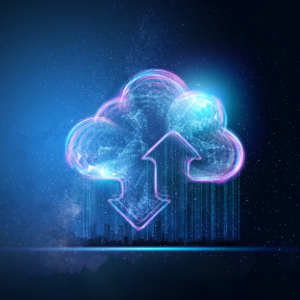Cloud technology has revolutionized the way businesses operate around the world. With its evolution over the years, it has become a ubiquitous technology, changing the face of modern computing. Its evolution has transformed it from an emerging technology to a dominant player in the technology landscape. From its early onset, the progression of cloud technology is a sight to behold.
Here, There, And Everywhere
Cloud computing has become synonymous with IT since 2006 when Amazon began leasing its remote servers to run programs, store information, and manage processes. Cloud technology, which has been made available by many companies including Google, Microsoft, and Oracle, has opened the way for an entire generation of new business models, new solutions, and new applications that are made feasible as long as theyd are linked to the Internet. Network access to shared, elastic, self-service solutions has transformed the provisioning and distribution of computing capabilities at work and play, from Netflix to Spotify to Fortnite.
Cloud computing continues to make leaps and bounds, multiplying its impact with its pervasiveness.
Cloud computing is such a technological and societal leap that we forget it’s simply one step in the cyclical progression of computing architecture standards, from mainframes to workstations, from personal computers to mobile devices and connected objects. However, unlike prior cycles, the pervasiveness of cloud computing multiplies its impact.
Its evolution includes additional breakthroughs that have changed the way people and machines connect, communicate, and generate money. It is now the standard operating infrastructure for the digital transformation of organizations, society, and behaviours.
10 INTERESTING (BUT LESSER-KNOWN FACTS)
ABOUT CLOUD TECHNOLOGY’S IMPACT ON BUSINESS:
Click to view infographic.
Businesses that use the cloud have 90% faster recovery times following disasters. (Aberdeen Group).
Businesses who use the cloud claim a 70% boost in customer satisfaction. (Salesforce report).
The cloud offers enhanced data security, with a 33% reduction in security breaches experienced by businesses that utilize the cloud (McAfee report)
Cloud computing’s scalability and flexibility enable organisations to quickly alter their resources as needed, which can cut IT expenses by up to 50%. (IBM report)
Businesses that adopt a multi-cloud strategy can see an average cost savings of 40% compared to those with a single-cloud approach. (IDC study)
80% of enterprises had a multi-cloud strategy in place by the end of 2022. (Gartner)
94% of organizations now use some form of cloud technology, and 87% of those organizations use a multi-cloud strategy (Survey by Flexera)
With 85% of organisations indicating that multi-cloud assists them in meeting legal obligations, the multi-cloud strategy enables them to easily comply with regulations. (Forbes)
By the end of 2023, 80% of all enterprise content will be created and managed outside of traditional data centers and will require cloud-based content management services. (Gartner)
Cloud technologies using artificial intelligence (AI) and machine learning (ML) will generate more than $265 billion in revenue by the end of this year (Forrester)
The Challenge Of Adapting To The Future, Now
This evolution has taken place so quickly that it has disrupted our perception of time. In the past, it was taken for granted that it could take years from the conception of a solution to its development and marketing of. Today, we talk about months or even weeks. Not only is the pace now much faster, but with the CI/CD approach, the rise of hyperscale and the fifth generation of mobile networks (5G), it is accelerating.
A world of more or less long cycles has been replaced by a world in which success or failure is measured in days, if not hours, minutes or even instantly.
In response to these increased needs, businesses are combining technologies by integrating hosted private cloud, public cloud, and on-premises infrastructure. To do this, they are implementing a strategy that combines Hybrid Multi-Cloud, wireless and wireline broadband networks, intelligent sensors, and edge computing. In this configuration, cloud computing extends its reach beyond the typical triad of services, making it more suitable for mobile mixed reality and the Internet of Things. It becomes the private, public, on-premises, and distant Everything-as-a-Service ecosystem.
The conventional vertical model of cloud services functioning in silos and only within the company is giving way to a horizontal model of services that may be utilised and accessible beyond the enterprise’s borders.
The sole distinction is that, unlike the initial wave of distributed computing, which was represented by the workstation and personal computer, next-generation cloud computing does not replace earlier designs. It coexists alongside them, which is why it is so unique and provides benefits that are unprecedented.
Next-generation cloud computing does not replace earlier designs. It coexists alongside them.
Here and there, at any time, and all at once
With this ubiquity of services available here and there at all times, hybrid cloud infrastructures, wired and wireless telecommunications infrastructures, edge computing and connected objects weave a continuum of distributed resources. In this integrated network, data and workloads move simultaneously between devices and stakeholders as needed.
As business environments change in space and time, so too have customer expectations. In order to meet the demand for immediate gratification, companies are now deploying their infrastructure and capabilities as a set of modular services that can be used inside, outside or at the edge of their boundaries and network.
From the physical to the virtual, through simultaneous instantaneousness here and there, spaces and temporalities are converging thanks to advances in artificial intelligence, augmented and virtual reality, edge computing, ultra-fast networks and sensors of the Internet of Things. The pivotal point of this convergence is cloud computing, a one-stop shop of services available and distributed anywhere, anytime.
More than ever, understanding the issues and challenges associated with managing new cloud solutions (frictionless hybrid and multi-cloud deployment, onsite and remote availability without service disruption, seamless operationalization, data security and wall-to-wall privacy) is part of a pragmatic and flexible solution aligned with the client’s evolving business model and needs.
All of these elements, from past to present, combined and evolving is what makes for the beauty of the cloud.
To learn more about how we can make the cloud beautiful for you, contact us [email protected] or call 1-514-866-0039
—————
Information for this article were compiled from several sources:
- Accenture: Modernize and accelerate
- Deloitte: L’ère de l’infonuagique est arrivée : prenez le virage
- Deloitte: Un nouveau cadre d’innovation infonuagique
- IBM: Cloud’s next leap
- KPMG: Global Tech Report 2022
- McKinsey: Creating Value With the Cloud
- Tung-Hui Hu: A prehistory of the cloud





